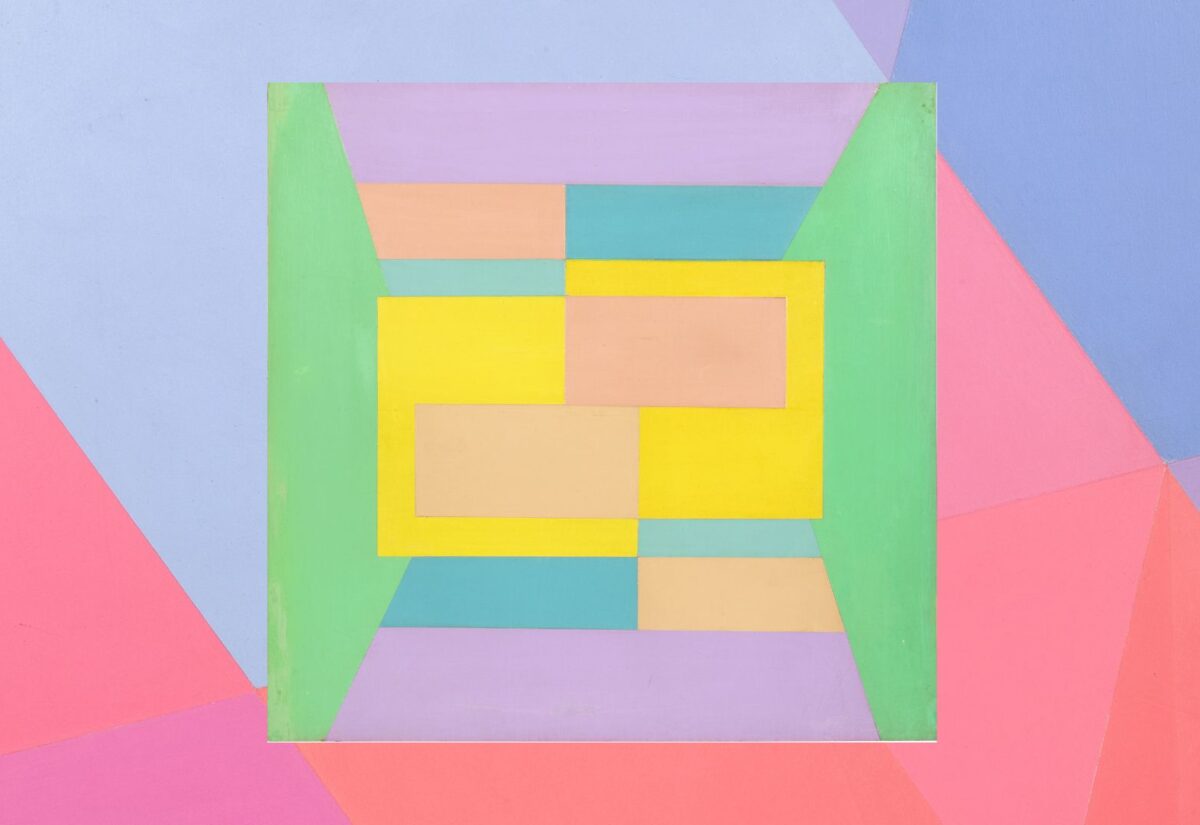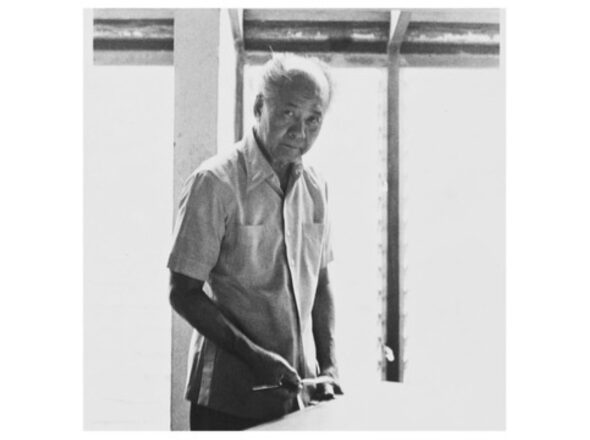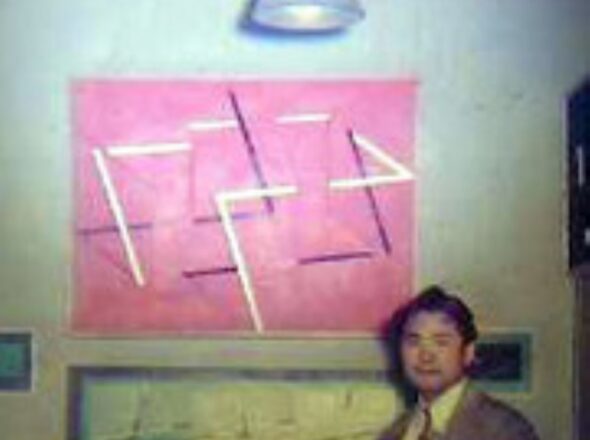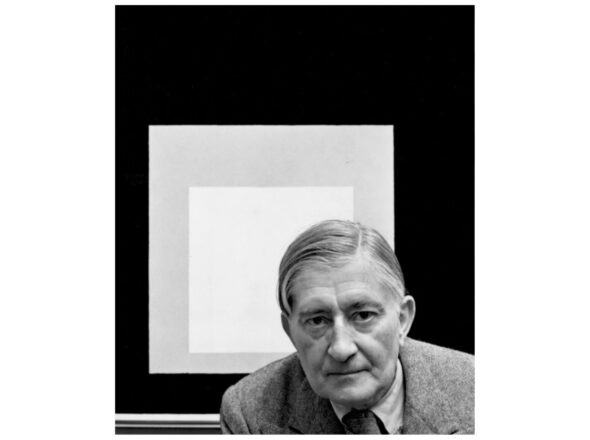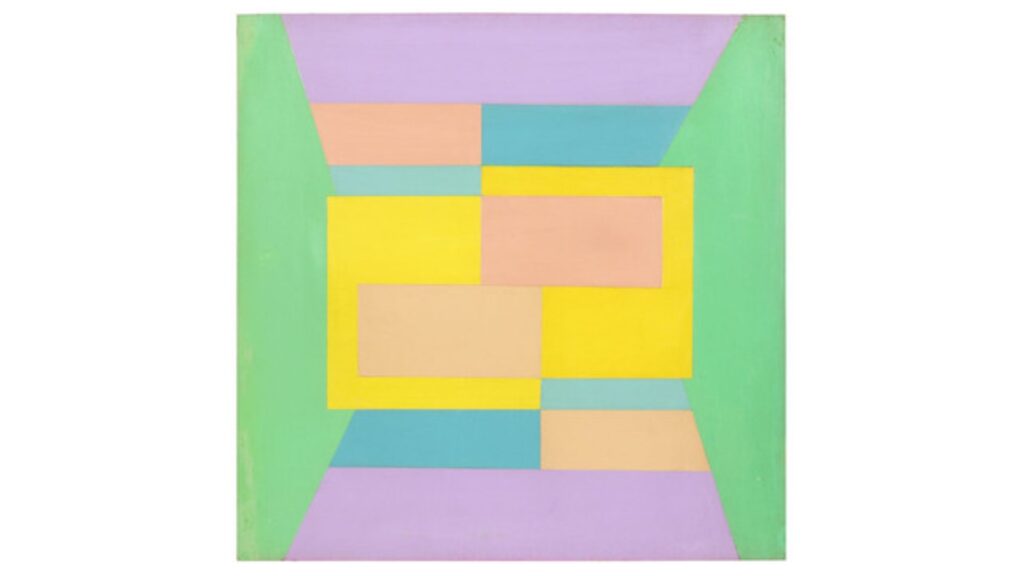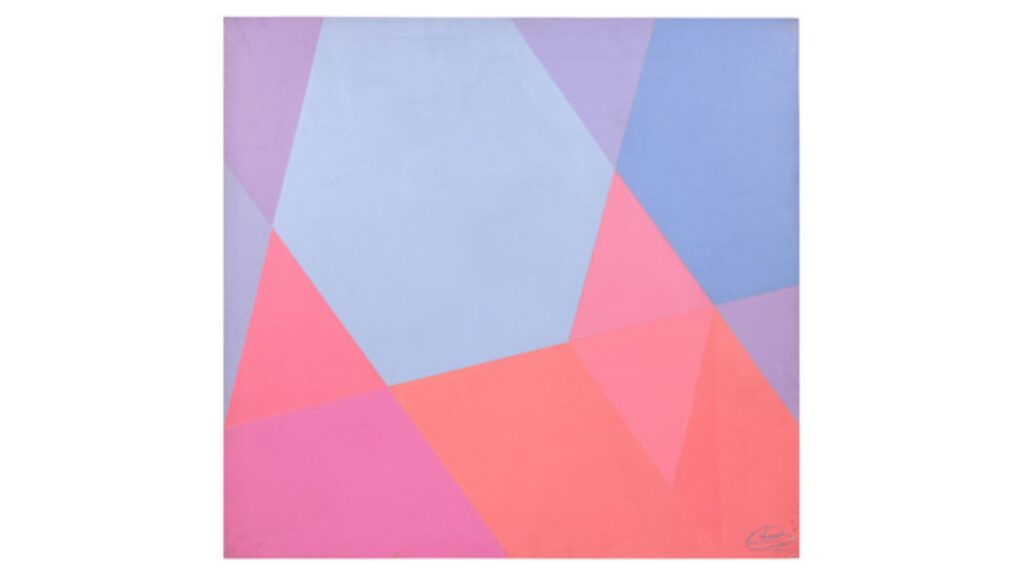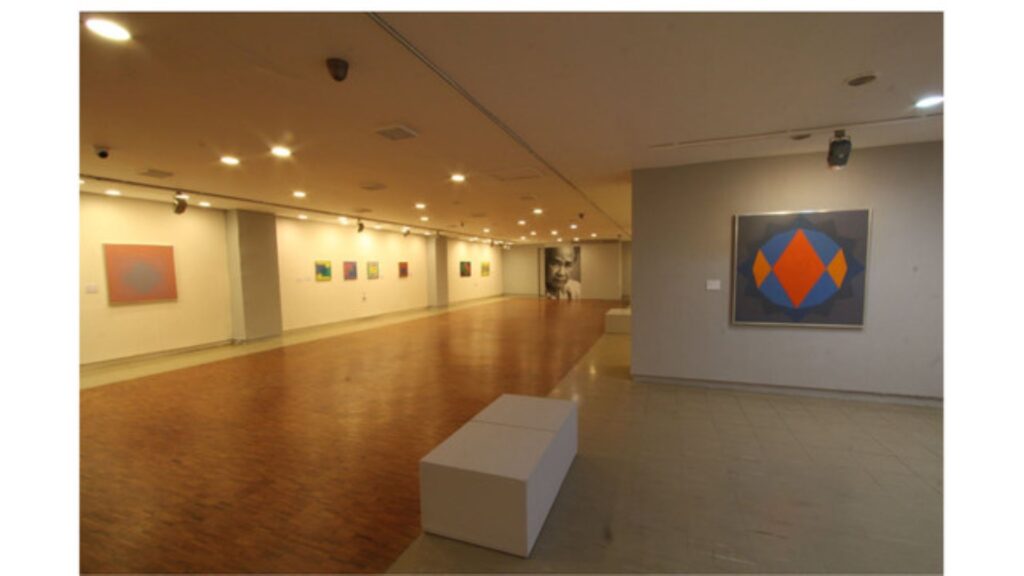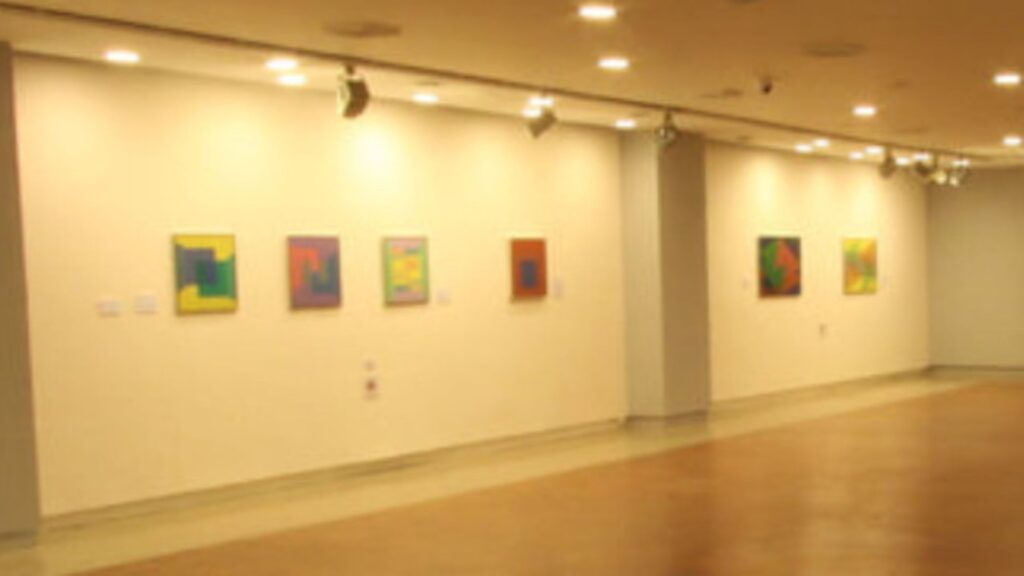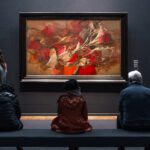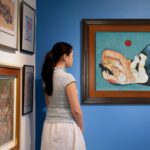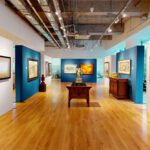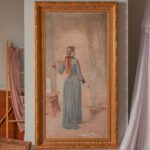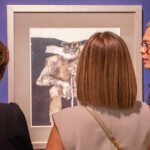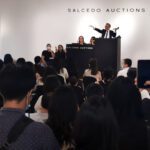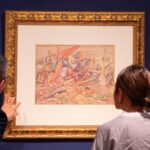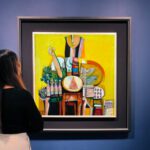In the 1950s, just as modernism was starting to take root in the Philippine art scene, across the sea at the Ivy League Yale School of Fine Arts in Connecticut, Constancio Bernardo was completing his Opus No. 1. It was the centerpiece of his eventual master’s thesis exhibition, Perpetual Motion, which he presented in 1955, and is considered to be a magnum opus of Bernardo’s abstraction–a magenta canvas animated by recessing lines and shadows that create illusions of depth. The story goes that his mentor, the renowned abstract painter and theorist Josef Albers, sat for hours studying the painting and told Bernardo, “You are not my student; you are my peer.”
When Bernardo returned to Manila after studying at Yale, his radical shift to abstract art did not sit well with his mentor, none other than National Artist Fernando Amorsolo. Bernardo was his protégé, with a skill likened to the highly celebrated painter himself. Bernardo was supposedly continuing their realist traditions in genre painting, not deviating from it. Regardless of his mentor’s disapproval, Bernardo had already converted from figurative painting to geometric abstraction. He saw that there was more to just following the physical world and that due attention must also be given to how the mind sees the world. He saw abstraction as poetry and as a spiritual awakening.
Pioneering Filipino abstract artist Constancio Bernardo in 1983 (Image source: https://bit.ly/3P536CO)
At Yale, Bernardo also studied under other abstract expressionist mentors and influences such as Willem de Kooning, Franz Kline, and Robert Motherwell. Bernardo developed his own interpretation of the burgeoning style. He adopted Op Art, the use of geometric forms to create optical effects, but leaned towards its more quiet and meditative side like Albers.
Bernardo imbibed Albers’ principle of color interaction, where color becomes more meaningful when set beside another color to interact with it in terms of intensity and tonal values. To him, color is not defined by itself but only in relation to another color. Expectation in November presents these exact nuances in color, displaying subtle changes in tints and hues that seem to blend together the longer the observer’s gaze lingers. His works explored creating these visual relationships through Op Art, resulting in a series of paintings that examine the graphic and chromatic interplays of his elements. In Interaction No. 1, Bernardo elevates this interplay of colors by shaping them in geometric forms, yet he intentionally crafts visual compositions where the hues seem to burst beyond the outline of their shapes.
Studying at Yale transformed Bernardo’s perspective on art, and he, in turn, had arguably made a significant influence on Philippine abstraction. His hard-edged pictorial composition and chromatic range were reflected in the works by artists that came after him. Justin Nuyda (1944 – 2022), for example, referenced his geometric and color schemes; while contemporary artist Mariano Madarang (1937 – 2008) adopts similar linear structure, gradient hues, and minimalist aesthetics.
‘Expectation in November’ (third artwork from the left) displayed at ‘Constancio Bernardo 1913-2013’ exhibit at Ayala Museum in 2013. (Image courtesy of Constancio Bernardo Official Website) View the complete exhibition history of ‘Expectation in November’ and ‘Interaction No. 1’ by checking out the catalogue.
Bernardo also carried all that he had learned into his role as a faculty member at the UP School of Fine Arts from 1947 to 1978. He had a deep affinity for experimenting with unconventional materials, and he fostered the same spirit of exploration among his students, among them National Artist Federico Aguilar Alcuaz, Alfredo Liongoren, Edsel Moscoso, Junyee, Nestor Vinluan and Roy Veneracion. National Artist Abdulmari Imao utilized both Bernardo’s color choices and geometric complexities in his Sarimanok works. Santiago Bose, a distinguished contemporary mixed media artist, and Judy Freya-Sibayan, renowned conceptual performative artist, attributed their mastery of craft to Bernardo’s encouragement to broaden their perspective and seek out their unique style within art. Norberto Carating, another prominent figure in the realm of contemporary abstraction, considers Bernardo his personal hero. Carating emphasizes that Bernardo’s primary focus was not on public recognition, but rather on pursuing his passion and doing what he truly enjoyed.
The Well-Appointed Life live and online auction takes place on 16 September 2023 at 2PM. Preview runs from Thursday September 8 to Friday September 15 at the Salcedo Auctions, NEX Tower 6786 Ayala Avenue, Makati City. The gallery is open on Tuesdays to Fridays, 9AM-6PM and Saturdays, 9AM-4PM.
Register to bid for the upcoming The Well-Appointed Life September edition. Download the eCatalogue via this link.
References:
Cristobal, Geronimo. “Perpetual Motion.” Pioneer Works Broadcast. 15 June 2021. https://bit.ly/3P536CO Dalisay, Jose. “Constancio Bernardo, the forgotten master.” PENMAN. PhilStar Global. 25 November 2013. https://bit.ly/44kaUot Lerma, Joaquin. Personal interview with Diego Angelo G. Bernardo. 16 September 2020. Lerma, Joquin. “To what extent did the artist Constancio Bernardo influence Philippine abstractionism?” Unpublished. 12 October 2020. Lippi, Filipina. “Celebrating Constancio Bernardo, foremost abstract artist of the Philippines.” GMA News Online. 2 October 2014. https://bit.ly/3sovWVy Patawaran, AA. “The revelations of Norberto Carating.” Manila Bulletin. 10 July 2021. https://bit.ly/3P3rMLG Official Website of Fine Arts Master Constancio Bernardo. https://www.constanciobernardo.com/
